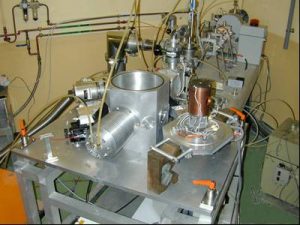Research on this topic focuses on fundamental studies of the behavior under irradiation of a wide variety of materials used in the context of nuclear power (metal alloys, glass, ceramics, polymers). The experiments involve external irradiation tools (ion accelerators or electrons), and at the same time benefit from important simulation efforts.
The studies focus in particular on the microstructural evolution of the materials and the associated aging as well as the evolution of their properties which results (brittleness, resistance to corrosion, chemical reactivity …), in relation to their potential uses.
Under irradiation materials and molecules undergo aging processes that must be mastered:
Particle-matter interaction: The collision of an ion with an atom, a molecule, an aggregate or a surface is the initial event of the processes leading to the various changes induced by the irradiations. At IRAMIS, the effects of multi-ionizations on the stability of matter are more particularly studied.
Materials under irradiation: Understanding the aging of materials placed in a radiative environment or modifying in a controlled way the properties of materials, are two axes of research at the heart of the CEA's priorities.
Radiolysis: The identification of physico-chemical processes induced by irradiation, as studied at IRAMIS, allows understanding many phenomena such as irradiation corrosion, radio-oxidation and the initial phases of radiobiological processes .



